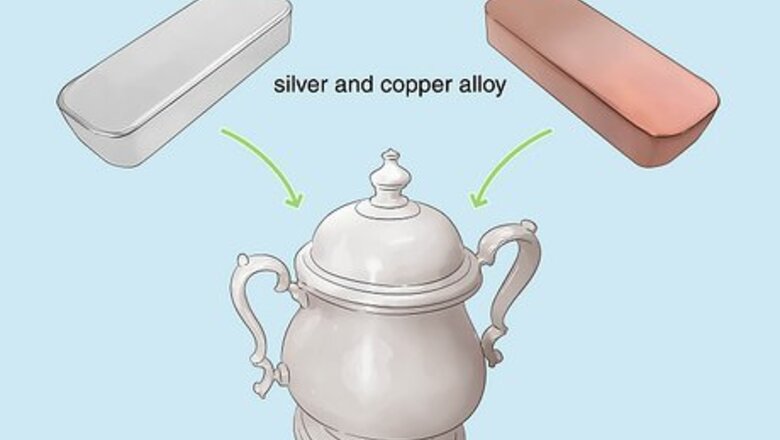
views
- Hold a magnet up to the item in question. Real sterling silver is not magnetic.
- Tap the sterling silver with a coin to see if it makes a high-pitched bell-ringing noise. If it does, it's real sterling silver.
- Authentic sterling silver is odorless. After cleaning the item, it shouldn't smell like anything if it's real sterling silver.
- Scrub the item with a white cloth. If black residue comes off from tarnish, it’s legitimate sterling silver.
What is sterling silver?
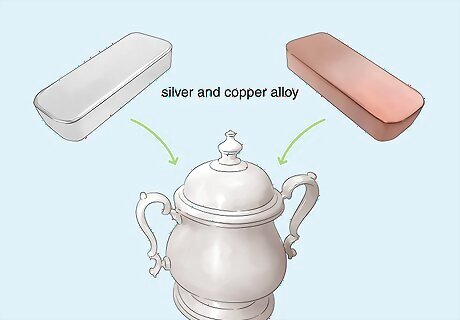
Sterling silver is a combination of pure silver and other alloys. 100% pure silver is extremely soft and fragile, which makes it a bad choice if you want your jewelry or silverware to last more than a few weeks. By combining silver with a little bit of a harder metal (usually copper), you can retain the sheen and look of silver while ensuring that it holds up over time.
Stamps & Markings

Real sterling silver typically has a 3-digit stamp. In most parts of the world, including the US, genuine sterling silver will have a 3-digit stamp on it. On rings, it’ll be located on the inside of the band. On other jewelry, just look around the clasp or on the back of the item for a code. These numbers are the percentage of actual silver in the sterling silver. So, a “325” indicates that the item is 32.5% silver, “925” is 92.5% silver, and so on. On some items, they may include the decimal point. See an eagle stamp next to the number? The sterling silver came from Mexico, which is actually the biggest exporter of sterling silver jewelry in the world.
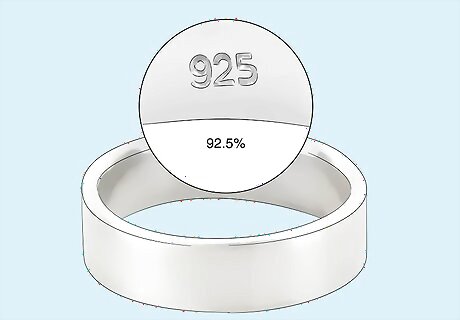
A 925 stamp is considered the highest quality of sterling silver. A “925” stamp indicates that the sterling silver is 92.5% silver (the other 7.5% is usually copper). A 92.5% purity level is considered the gold standard when it comes to sterling silver, since it’s just diluted enough to strengthen the item without diminishing the sheen and quality of the silver.

Real sterling silver from the UK will have a stamped image on it. There’s an odd tradition in the United Kingdom of stamping sterling silver based on where and when it was made. This was particularly popular before 1970 (some modern jewelers have since adopted the US system). If you spot a stamped sigil, look online to see where it’s from. If the stamp lines up with the provenance (which is the story of where it’s from), it’s likely real. For example, an uncrowned leopard’s head means the piece was made in London from 1821-today. A castle means that it was made in Edinburgh. Additional stamps may indicate authorship or date. An “AB” stamp could stand for A. Beardshaw & Co., for example. Other countries may have their own unique stamp. France currently marks its sterling silver items with the head of Minerva (92.5% and below) or a vase (99.9% pure silver), for example.
Purity Tests
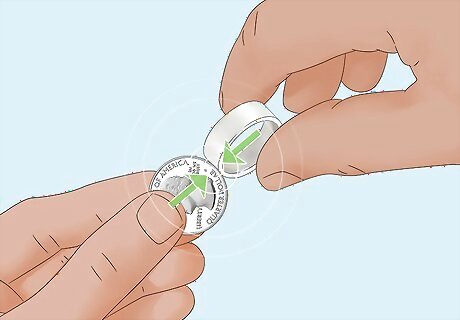
The Sound Test When sterling silver is gently tapped with a piece of metal, it will produce a high-pitched bell-like tone that lasts for 1 to 2 seconds. To conduct this test, carefully tap the sterling silver item with a metal coin. If the item is truly sterling silver, it will generate a high-pitch ring. If you do not hear a ring, the item is unlikely to be sterling silver. It can help to do this by comparing the sound to a piece of authentic sterling silver. If you have a US quarter made before 1965, that’ll work! Those quarters are 90% silver (900).
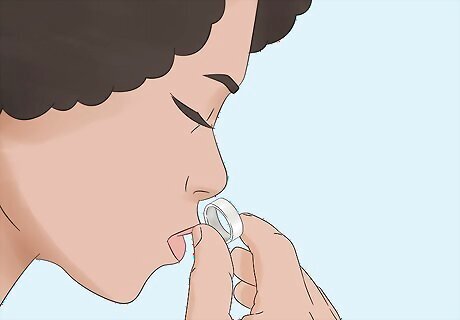
The Sniff Test Silver does not produce a smell. Wipe and dry the item if it’s been sitting in a particularly smelly area. Then, hold the item up to your nose and smell it carefully for a few moments. If you sense a strong smell, the item may not be sterling silver. Copper is a common alloy in sterling silver, but 925 sterling does not contain enough to make a smell. Lower purity sterling silver (like 350) may have a faint coppery smell.

The Bend Test This works best with sterling silver plates, bracelets, or necklaces. Try to gently bend or flex the item with your hands. If you can successfully bend it, the item is probably made from pure silver or high-quality sterling silver. If the item does not bend, it is less likely that it is made from silver or sterling silver.
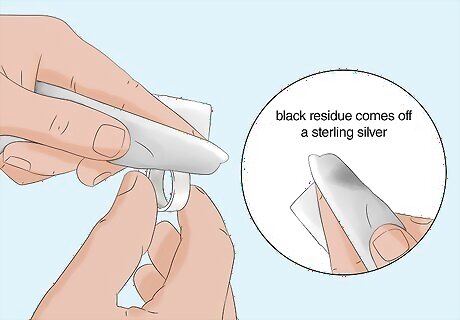
The Rub Test When silver is exposed to air, it oxidizes. The oxidization of the silver causes the metal to tarnish and take on a black tint over time. Grab a clean, white cloth and rub a portion of the silver. If a little bit of black residue comes off, it’s sterling silver. If you see black marks, the item is either silver or sterling silver. If nothing comes off, the item is almost positively not sterling silver.
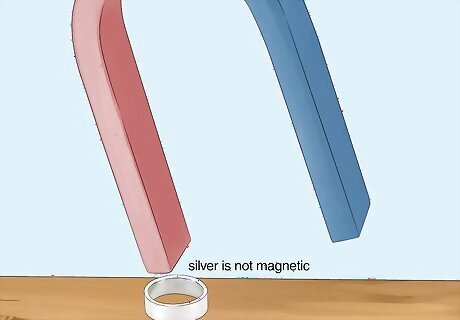
The Magnet Test Like gold and platinum, silver is a non-ferrous metal, which is a fancy way of saying it’s not magnetic. Run a strong magnet over your item. If the item is not attracted to the magnet, it is likely that you’ve got real sterling silver. If the item sticks to the magnet, it does not contain sterling silver. More than likely, the item is made from highly polished stainless steel intended to look like pure silver.
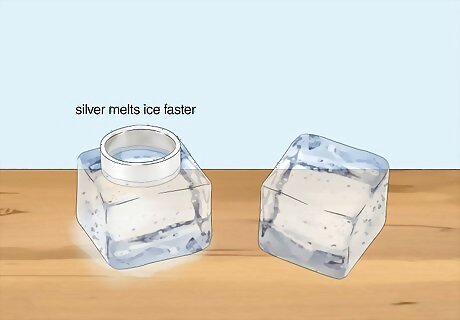
The Ice Test Silver has the highest thermal conductivity rate of any known metal, which means it conducts heat. Set two ice cubes out. Put the silver item on one of them. If the ice cube under the silver melts faster than the other ice cube, you’ve got real silver. Alternatively, you can put the silver underneath the ice cube. You should see a puddle forming almost immediately if it’s real silver.
Professional Help

Take your item to a appraiser to have it inspected. If your home tests yield inconclusive results, you may need to consult a professional to determine if your item is silver, sterling silver, or silver plated. While there are a variety of professionals to choose from, some are more qualified than others. Select a professional that is certified, experienced, and highly recommended. Professional appraisers are highly trained and experienced. Many reputable appraisers are certified by the American Society of Appraisers. Their job is to assess the quality and worth of items. Graduate jewelers are trained and certified by the Gemologist Institute of America. They are skilled artists and experienced repairers of jewelry. They are also capable of evaluating an item's materials.
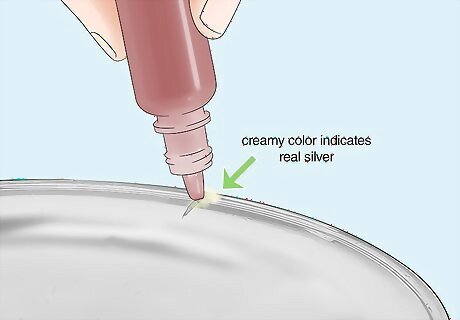
Ask a professional jeweler to conduct a nitric acid test. When nitric acid comes into contact with metal, it reveals if the metal is real or imitation. The professional will nick or scratch the item in a discreet area. They will place a drop of nitric acid into the nick or scratch. If the area turns green, the item is not made out of silver; if the area turns a creamy color, the item is made out of silver. You can do this at home, but it is dangerous since nitric acid is noxious. When handling nitric acid, you need to be extremely careful. Always wear protective gloves and eyewear.
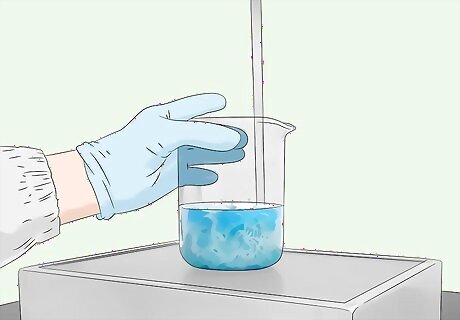
Send your silver item to a lab for further testing. If your item requires further testing, you may send it to a professional advanced jewelry or metal testing laboratory. Ask a local, trusted jeweler for lab recommendations or search for a reputable advanced metal testing lab online. At the lab, scientists will conduct a battery of tests to determine the chemical makeup of your item. These tests may include: Fire assay—melting down a sample of the metal and conducting a chemical assay The use of an XRF gun. This item send x-rays through the item to test the metal's purity. Mass spectrometry—a test used to determine an item's molecular and chemical structure. Specific gravity assessment—a water displacement test.
















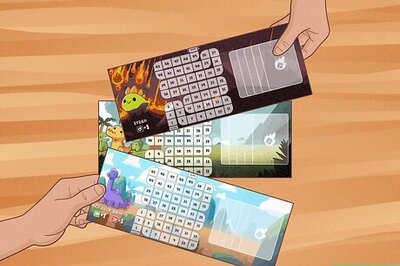
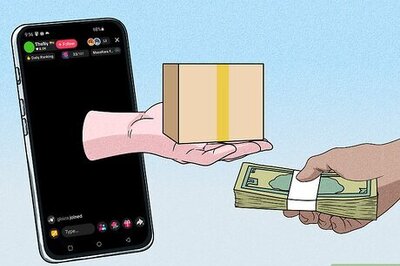

Comments
0 comment